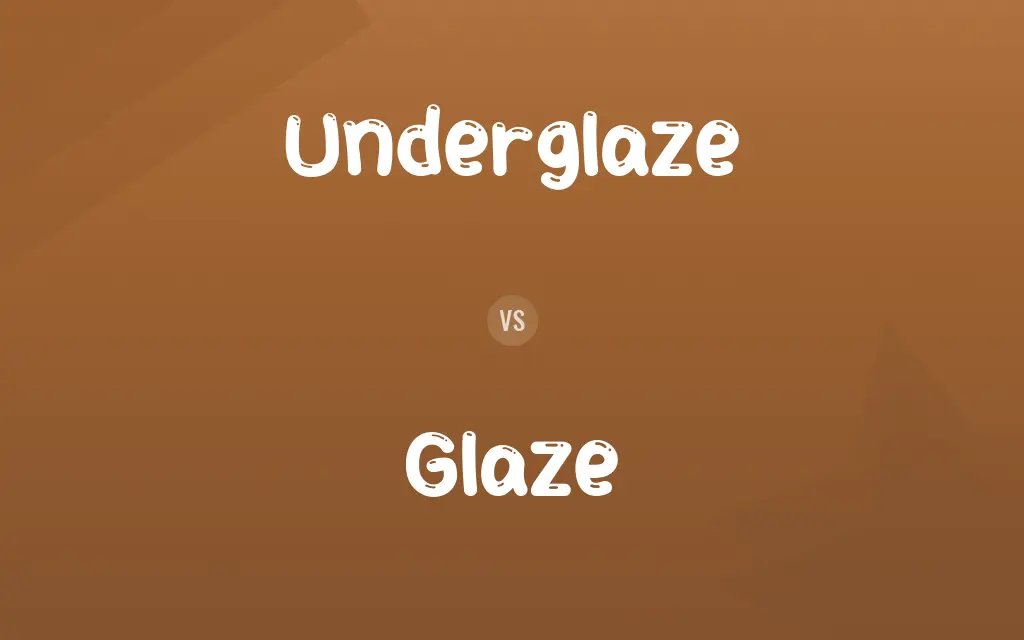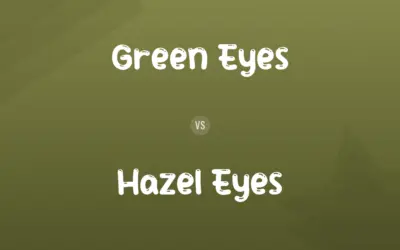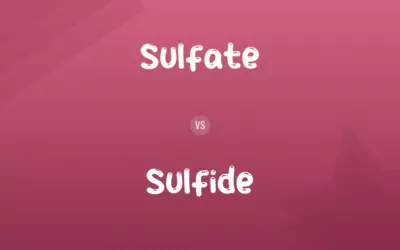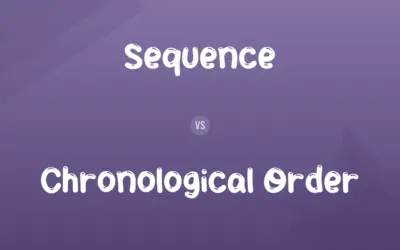Underglaze vs. Glaze: Difference and Comparison
Edited by Muazma Batool — By Muneeza Rehman — Published on April 28, 2024
Underglaze is a colored decoration applied to pottery before it is glazed, allowing for intricate designs beneath a clear glaze. Glaze is a glass-like coating applied over pottery that vitrifies in the kiln and waterproofing to the ceramic piece.

Difference Between Underglaze and Glaze
Underglaze and glaze are both crucial in the ceramics process, but they serve different purposes. Underglazes are used to add color, patterns, and designs to the bisqueware (unfired pottery) and are typically applied before the first firing. They allow for detailed artistic expressions and can be covered by a transparent glaze, which protects the underglaze decoration and ensures it remains visible after the final firing. Glazes, on the other hand, are usually applied after the bisque firing and before the final firing. They consist of silica, fluxes, and colorants, melting into a glassy surface that seals the pottery, making it food-safe, waterproof, and durable.
Muneeza Rehman
Apr 28, 2024
Underglazes are formulated to remain stable and not blend into the glaze applied over them, preserving the clarity of the design. Glazes can be glossy, matte, or textured, and they vary in transparency and color, depending on their chemical composition and the firing temperature.
Muneeza Rehman
Apr 28, 2024
The relationship between underglaze and glaze is complementary. Underglaze provides the visual detail beneath the protective glaze layer. In contrast, the glaze offers a functional surface that interacts with the underglaze to enhance the overall aesthetic of the ceramic piece. Artists choose underglazes and glazes based on the desired visual effect and the functional needs of the piece.
Muneeza Rehman
Apr 28, 2024
Underglaze vs. Glaze Comparison Chart
Purpose
Adds color and design beneath the glaze
Provides a protective, often colorful coating
Muneeza Rehman
Apr 28, 2024
Application Stage
Applied to bisqueware before glazing
Applied after bisque firing, before final firing
Muneeza Rehman
Apr 28, 2024
Composition
Pigments mixed with a clay slip or medium
Silica, fluxes, and colorants melting into glass
Muneeza Rehman
Apr 28, 2024
Firing Temperature
Can vary, but must be compatible with glaze firing
Depends on the type (earthenware, stoneware, porcelain)
Elijah
Apr 28, 2024
Finish
Typically matte, requiring glaze for gloss finish
Can be glossy, matte, or textured
William
Apr 28, 2024
Transparency
Opaque, allowing for detailed designs
Can be transparent, opaque, or translucent
Leo
Apr 28, 2024
Interaction with Clay
Bonds with the surface, under the glaze
Melts to form a glassy layer that bonds with the clay
Muneeza Rehman
Apr 28, 2024
Durability
Dependent on the covering glaze for protection
Makes the surface food-safe, waterproof, and durable
Muneeza Rehman
Apr 28, 2024
Underglaze vs. Glaze Definitions
◉Underglaze
A method for applying colors and designs to pottery, visible under a clear glaze.
She painted delicate flowers on the vase using underglaze.
Olivia
Feb 27, 2024
◉Glaze
A glass-like coating that vitrifies during firing, sealing the pottery.
The glaze gave the bowl a glossy, waterproof finish.
Muneeza Rehman
Feb 27, 2024
◉Underglaze
Opaque, ensuring designs remain vivid under a clear glaze.
The bright underglaze colors remained vibrant under the transparent glaze.
Muneeza Rehman
Feb 27, 2024
◉Glaze
Can add color, texture, and durability to ceramic pieces.
He chose a blue glaze to enhance the texture of his pottery.
Olivia
Feb 27, 2024
◉Underglaze
Allows for artistic detail before sealing with glaze.
Underglaze techniques enabled intricate patterns on the ceramic cups.
Muneeza Rehman
Feb 27, 2024
◉Glaze
Protects and decorates, making ceramics food-safe.
The final glaze application made the dishware safe for food use.
Kaitlyn
Feb 27, 2024
◉Underglaze
Applied to unfired or bisque-fired clay pieces.
The potter applied underglaze to the bisqueware before the final firing.
Muneeza Rehman
Feb 27, 2024
◉Glaze
Varies in finish, from glossy to matte, affecting the piece's aesthetics.
A matte glaze was used for a subtle, elegant look.
Leo
Feb 27, 2024
◉Underglaze
A decorative slip applied to the surface of pottery before glazing.
Muneeza Rehman
Feb 27, 2024
◉Underglaze
To apply a decorative slip to the surface of pottery before glazing.
Muneeza Rehman
Feb 27, 2024
◉Underglaze
Applied under the glaze, that is, before the glaze is put on; fitted to be so applied; - said of colors in porcelain painting.
Muneeza Rehman
Feb 27, 2024
Underglaze vs. Glaze Frequently Asked Questions
Can glaze be applied without underglaze?
Yes, glaze can be applied directly to bisqueware without underglaze, offering color and protection without the added step of underglazing.
Muneeza Rehman
Apr 28, 2024
Can underglaze be applied over glaze?
Typically, underglaze is applied before glazing and firing, but some artists experiment with applying underglaze over glaze for specific effects, followed by re-firing.
Muneeza Rehman
Apr 28, 2024
Is it necessary to use both underglaze and glaze on a piece?
While not necessary, using both can enhance the piece's durability and aesthetic. Underglaze adds detailed design, while glaze provides a protective, functional surface.
Muneeza Rehman
Apr 28, 2024
How do you choose the right glaze for your ceramic piece?
Consider the clay body, the firing temperature, the desired finish (glossy, matte), and the piece's intended use (decorative vs. functional).
William
Apr 28, 2024
Can underglaze be used on its own?
Underglaze can be used without a covering glaze, but it will remain porous and not food-safe or waterproof. A clear glaze is recommended for functional ware.
Kaitlyn
Apr 28, 2024
Do underglazes change color after firing?
Underglazes can change color depending on their composition and the firing temperature, so it's important to test them before application on final pieces.
Henry
Apr 28, 2024
How does firing temperature affect glaze?
Firing temperature can dramatically alter the appearance and texture of a glaze, affecting its melting point, color, and interaction with the clay body.
Muneeza Rehman
Apr 28, 2024
Are there food-safe underglazes and glazes?
Yes, many underglazes and glazes are formulated to be food-safe once fired correctly. Always verify the manufacturer's specifications to ensure safety.
Leo
Apr 28, 2024
How many layers of glaze should be applied?
The number of glaze layers can vary based on the desired thickness and effect. Typically, 2-3 coats are sufficient, but experimentation and testing are key.
Olivia
Apr 28, 2024
What's the difference between brushing and dipping glazes?
Brushing glazes are applied with a brush, allowing for detailed work, while dipping glazes quickly cover a piece evenly and are suitable for larger quantities.
Kaitlyn
Apr 28, 2024
Content Creators
Written by
Muneeza RehmanAt Comparisons.wiki, Muneeza skillfully navigates the vast sea of information, ensuring clarity and accuracy as the lead content editor. With a keen eye for detail, she curates every comparison to enlighten and engage readers.
Edited by
Muazma BatoolAs a content editor, Muazma Batool is not just a grammar guru but a creative mastermind who breathes life into every word. With an eagle eye for detail and a passion for storytelling, she transforms bland text into engaging content that captivates audiences and drives results.































